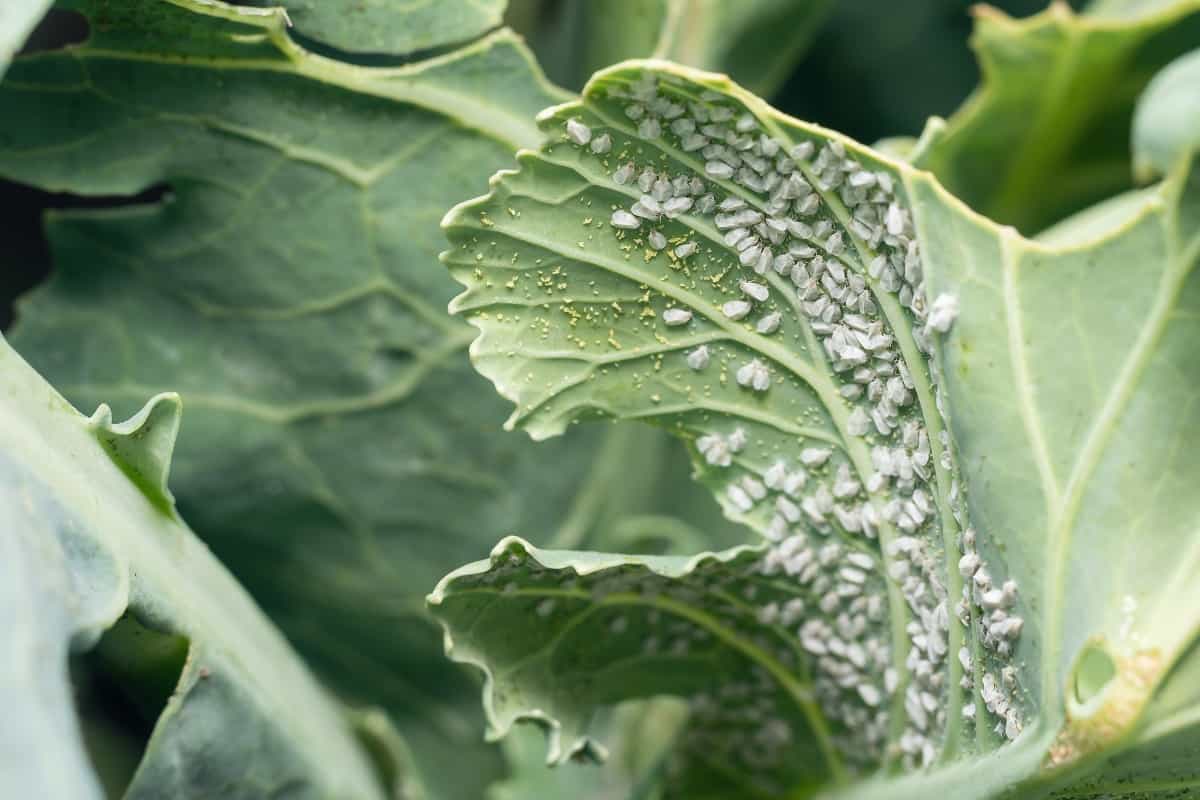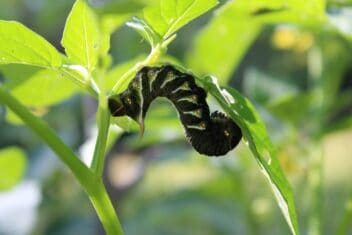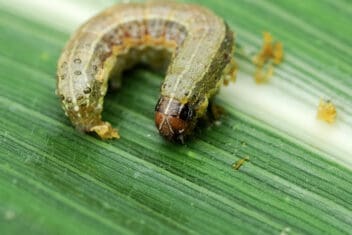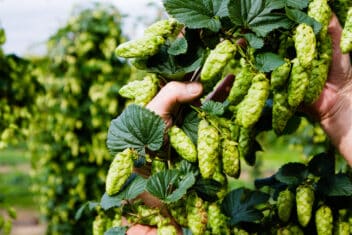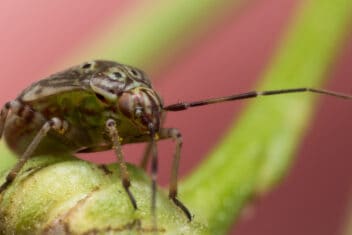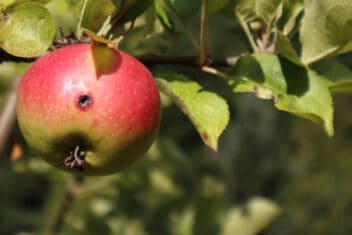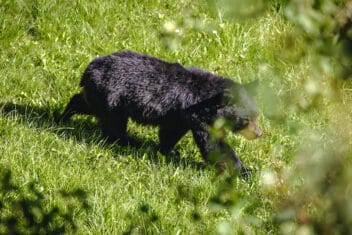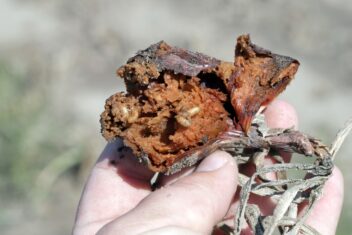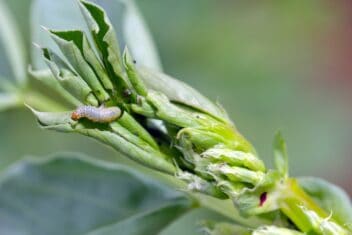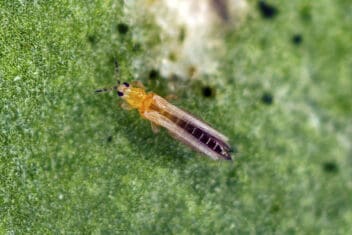There are plenty of reasons to grow plants indoors. Besides controlling almost all variables, from the amount of light your plants get to the amount of water they receive, growing indoor plants will also enable you, in most cases, to prevent a multitude of pests and diseases.
Unfortunately, just like all plants, there are still some plant pests to which houseplants can be vulnerable. Since the conditions you are providing your plants are likely the ones ideal for their growth, the bad news is that these conditions can also be conducive to pests.
The good news is that there are steps you can take to prevent and eliminate indoor plant pests. Here are some of the most common indoor plant pests – and how you can get rid of them for good.
Why Grow Indoor Plants in the First Place?
There are several excellent reasons to consider growing plants indoors. For one, you will have more control over all the variables.
If you want to grow a tropical houseplant but live in an inhospitable environment, no worries, it can be done! Conversely, if you want to grow carrots but live in the tropics, growing them indoors will make it much easier for you to keep them cool.
You can overwinter outdoor-grown container plants indoors or you can grow plants indoors for 100% of their life-cycle. You’ll have the utmost flexibility in what you choose to grow – the sky’s the limit.
In addition to being able to grow plenty of edible crops indoors for you to enjoy, growing plants indoors will also make it possible for you to enjoy a positive boost to your mental and physical health. Gardening makes us feel good – and it doesn’t matter if that’s indoors or outside.
However, there are some challenges you will need to account for, too. For instance, indoor-grown plants may have to adapt to less light, lower humidity, and hot air from indoor heating (or cold air from indoor cooling). This can often make the leaves and flowers of your plants, in particular, more vulnerable to diseases and pest infestations.
Most Common Indoor Plant Pests
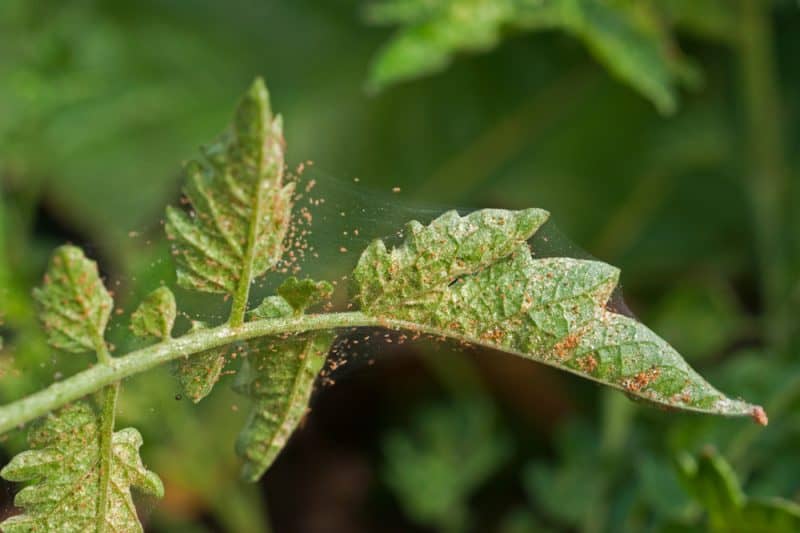
1. Spider Mites
Spider mites of all kinds are common on indoor plants, but one of the most prolific is the red spider mite. It’s not an insect but an arthropod, closely related to spiders.
You likely cannot see these pests with the naked eye. However, you’ll likely spot a red film across the bottom of your plant’s leaves or even notice some leaf damage or red-brown spots.
Spider mites can be controlled with beneficial insects like minute pirate bugs. It’s also a good idea to keep the air humid since these pests prefer dry conditions.
2. Mealy Bugs
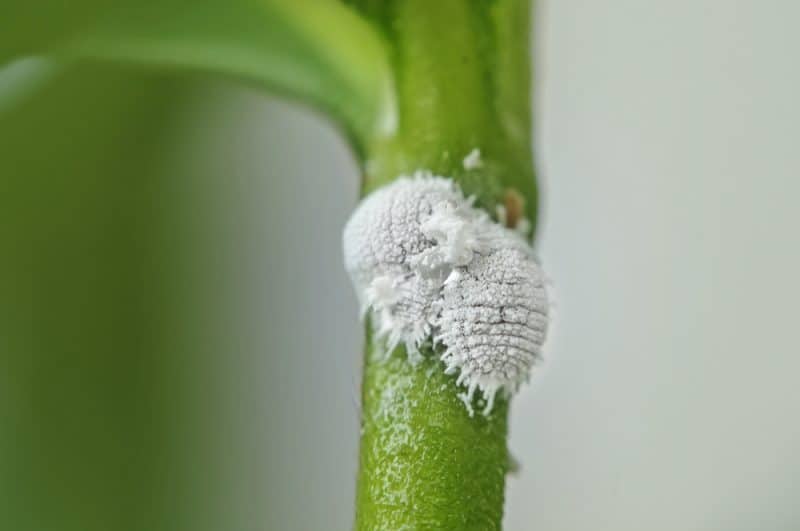
Mealy bugs, or Pseudococcidae, are also common on indoor plants. These pests can be somewhat challenging to control.
They look like soft, cottony white growths on your plants. Like aphids, a pest that we’ll discuss in more detail below, they release honeydew. This honeydew can attract ants, another pest that can spell disaster for your indoor plants.
Therefore, it’s important to get mealybugs under control. You can release beneficial insects like green lacewings or you can spot treat your plants by dabbing a bit of isopropyl alcohol (using a Q-Tip) onto the pests themselves.
3. Fungus Gnats
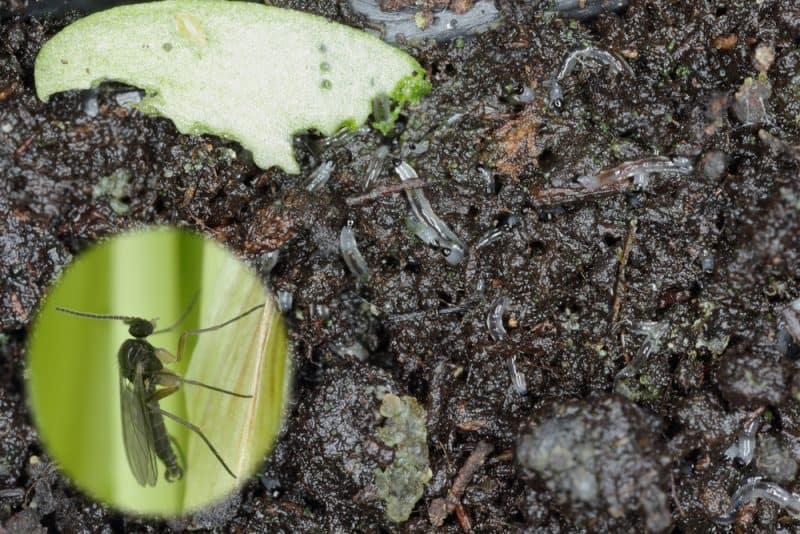
Fungus gnats are perhaps the most widespread indoor plant pests. The good news is that they won’t really do much to harm your plants – they’ll annoy you much more.
These pests look like fruit flies and are often found in damp, fresh soil where nutrient levels are high. They can be controlled by moderating the soil moisture or you can use things like Bacillus thuringiensis or fungus gnat predators.
4. Root Aphids
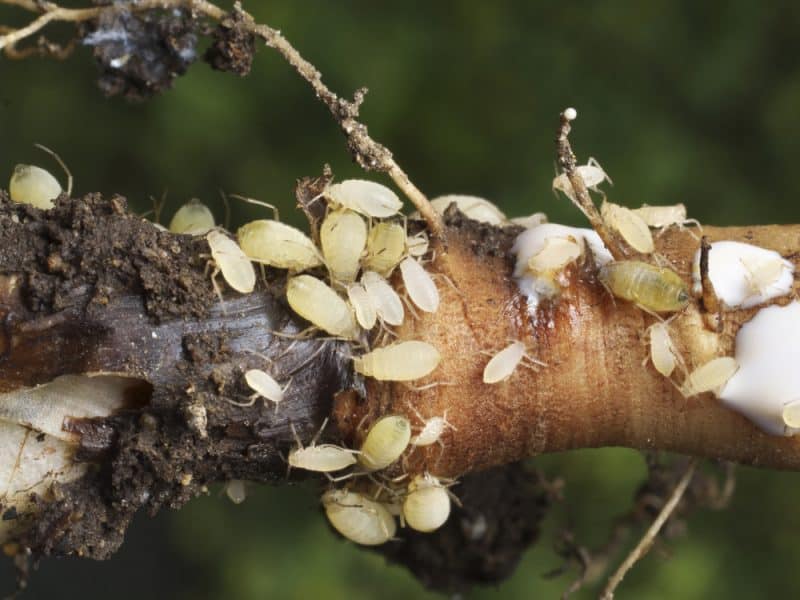
Aphids are small insects, but that doesn’t mean that they don’t do their fair share of damage! There are several kinds of aphids to watch out for, many of which are plant-specific.
Root aphids are some of the most common aphids to infest indoor plants. Common in greenhouses and other controlled settings, these pests are hard to spot and can easily grow into out-of-control populations.
Rather than seeing the pests themselves, you’re more likely to see the white, waxy material that they leave behind on plants. This is honeydew, a substance that is secreted by all other kinds of aphids as well.
Easily adaptable, these pests bore into plant roots and make your plants more vulnerable to mildew and other diseases. You’ll know it’s a root aphid infestation if your plants’ leaves wither, curl, or yellow. Noticing any diseases like root rot and mildew can be a sign of an aphid infestation, too.
Many growers confuse the signs of aphid infestation with those of nutrient deficiency and incorrectly treat their plants for the deficiencies. Make sure you test your soil before adding any nutrients – if the levels are appropriate, it could be a root aphid infestation to blame.
To treat root aphids, you may need to use yellow sticky traps to positively identify this kind of infestation. You can then use beneficial nematodes or you can use a biological insecticide with an entomopathogenic fungus-like Beauveria bassiana. Also, any plants that are badly infested should be removed.
5. Scale Insects
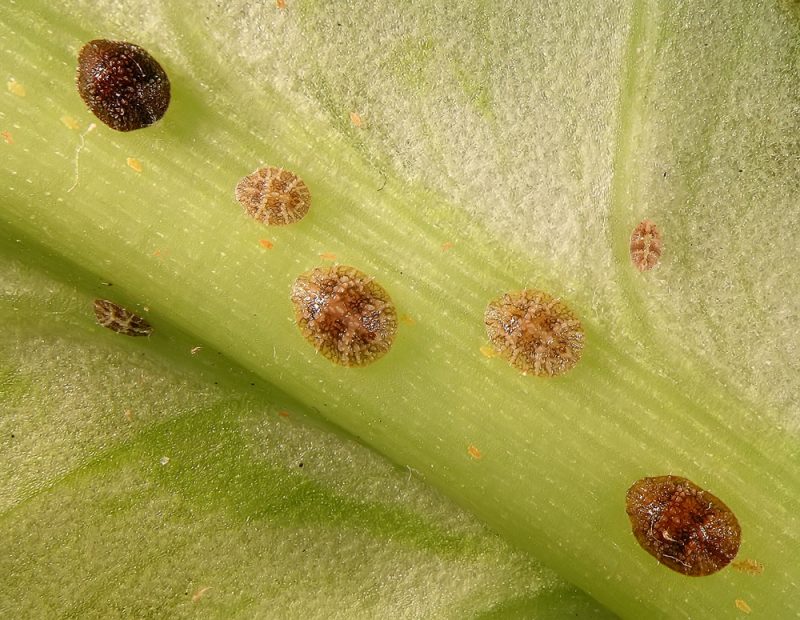
Scale insects, also known as the common brown scale, are extremely fond of indoor plants. There are several varieties to watch out for but the most widespread species is the brown soft scale or Coccus hesperidum. These don’t look like regular insects – they actually look like odd growths on your plants.
However, they’re quite dangerous, often found in clumps on a plant’s stem, sucking at plant juices with their spiky mouthpieces. They are only mobile when they’re firstborn, but once they’re mature, they can be quite malicious. They’ll reproduce rapidly, and you’ll likely need to use an insecticidal spray to get rid of them.
You can often scrape scales right off the plants or use things like rubbing alcohol to get rid of them as well. Inspecting your plants regularly to make sure you haven’t missed any scale insects is also wise.
6. Springtails
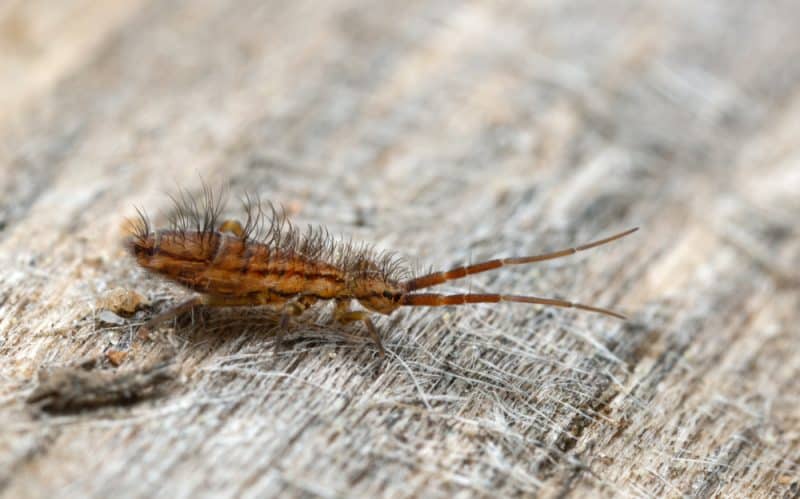
Springtails are more commonly found just hanging out in homes than they are on plants, but they’ll be happy to feast on your plants if given the chance, too. These pests like damp organic matter and moist soil.
Therefore, getting rid of them often boils down to remove any excess moisture. Of course, you’ll still need to water your plants – but try your best not to over water and cut down on humidity, if you can.
There are several products you can use to get rid of springtails, like insect pellets and insecticides.
7. Whiteflies
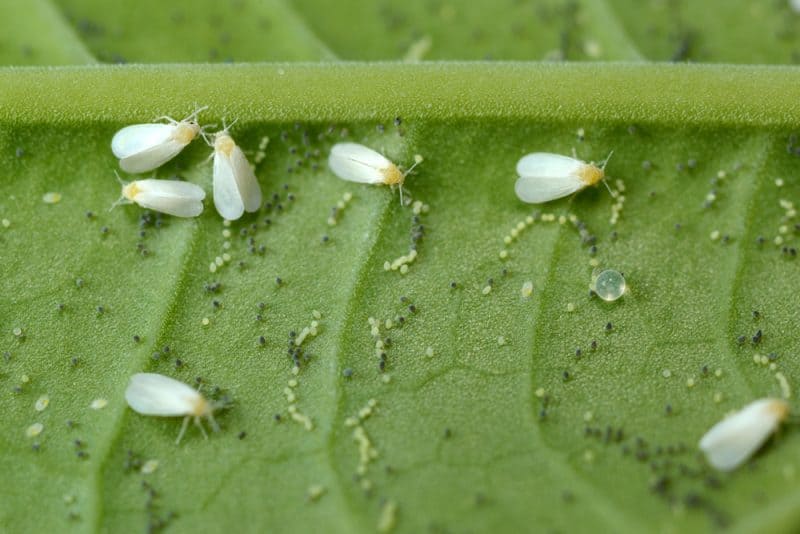
Whiteflies are closely related to scale and aphids. They are often confused for mealybugs, but the difference is that they will take flight when disturbed. They’ll also eat just about any kind of indoor plant.
Like aphids and mealybugs, they exude honeydew – something that can attract both ants and lead to diseases like sooty mold. Let whiteflies multiply and they’ll severely weaken your plants.
The easiest way to get rid of these pests is just to give them a harsh blast of water now and then. You can also use beneficial insects like ladybird beetles or green lacewings. There are whitefly specific pesticides you can use, too.
8. Leaf Miners
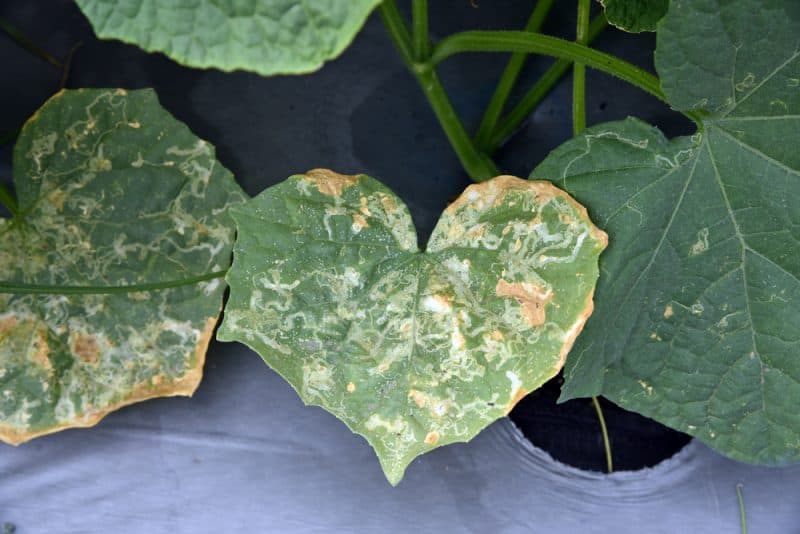
Leaf miners inflict serious, unsightly damage on plants. There are several types but most present problems for your plants.
You’ll suspect a leaf miner infestation if you see yellow, squiggly looking lines in your plants’ leaves. This is where the leaf miners’ larvae have bored their way through the leaves. You may have to use a pesticide, but you’ll need to spray at the right time. Spraying too early will only kill the eggs while spraying too late will kill the adults – you need to kill the larvae in between those two stages.
You can also use neem oil to get rid of leaf miners. It won’t kill them immediately, but it can do so in a more natural manner.
9. Thrips
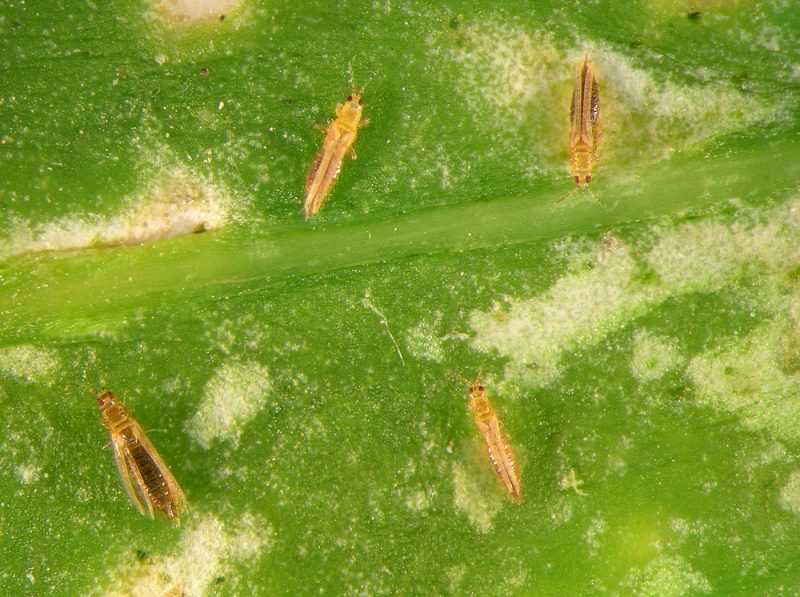
Thrips aren’t quite as common indoors but are still pests you should be on the lookout for. Thrips are often introduced to indoor plants from plants that were grown outdoors and then brought inside. If you have a thrip infestation, you are most likely to notice their waste first – that’s right, their poop!
They will cause your plant leaves to become silvery and discolored, and occasionally they can also damage the outer layer of a plant’s leaves.
Getting rid of thrips is easy enough. You can use blue sticky traps or you can introduce thrip predators and minute pirate bugs to control infestations in a chemical-free way.
10. Russet Mites
Russet mites are translucent, wedge-shaped pests that are often found in groups. Like many other kinds of pests on this list, they are sapsuckers. They’ll begin by feeding on the lower portions of the leaves and then work their way up the plant.
These pests can be tough to identify, as early signs of infestation present themselves like a magnesium or iron deficiency. Therefore, testing your soil is important. You should inspect your plants regularly and never use potting soil from outdoors to start your indoor plants, as these often harbor russet mite eggs.
You can periodically release spider mite predators to keep these pests at bay. Often, adjusting moisture content and room temperatures to more balanced levels (not too hot, not too cold, not too wet, and not too dry) can help too. You can use things like neem oil or canola oil sprays to get rid of russet mites as well.
How to Prevent Indoor Plant Pests
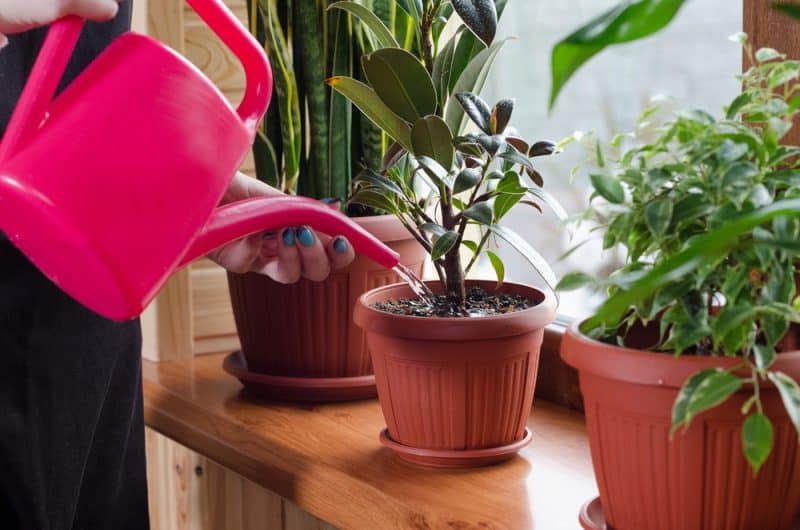
Indoor plant pests can be annoying and aggravating, to say the very least. The good news is that they are fairly easy to get (and keep!) under control.
For instance, always examine a plant before you buy it, and especially before you bring it indoors. If you identify insects on the plant while you’re still at the store, be sure to notify the owner.
Use clean pots and potting soil, not soil you pulled from the garden. If you notice pests after you’ve transplanted your plants or brought them indoors, there are a few general catch-all treatments that will work well for most plants. Diatomaceous earth is one such example.
Of course, it’s always a good idea to follow general gardening guidelines when you’re caring for indoor plants, too, just as you would if you were growing them outdoors. Water moderately and don’t let your soil become too dry or too waterlogged. The same goes for nutrients – balance is best!
By creating the ideal environment for your plants, you’re of course going to find that you have some pests that want to hop aboard for a free lunch, too. However, that doesn’t mean you need to let them.
In keeping your plants healthy, they’ll be much better at withstanding and preventing their own pest infestations – and you’ll get better at spotting and eliminating these most common indoor plant pests over time, too.
